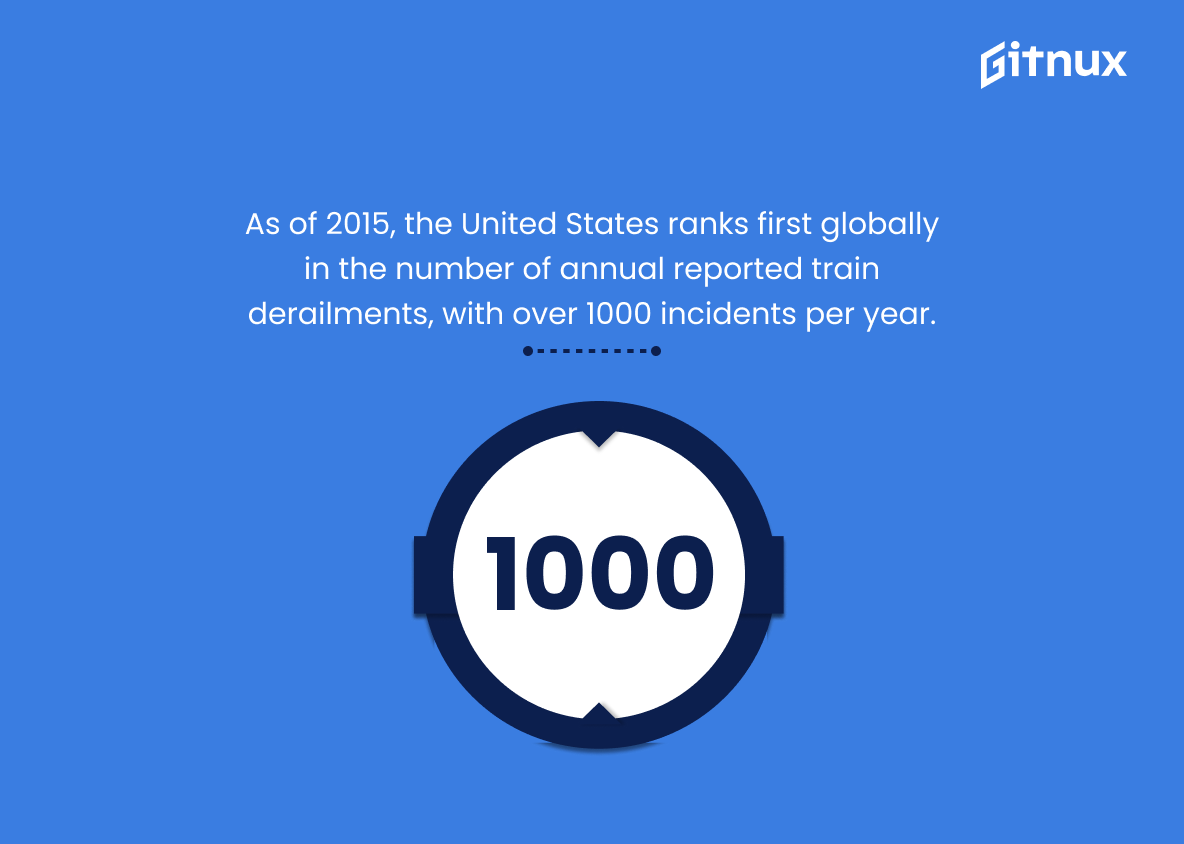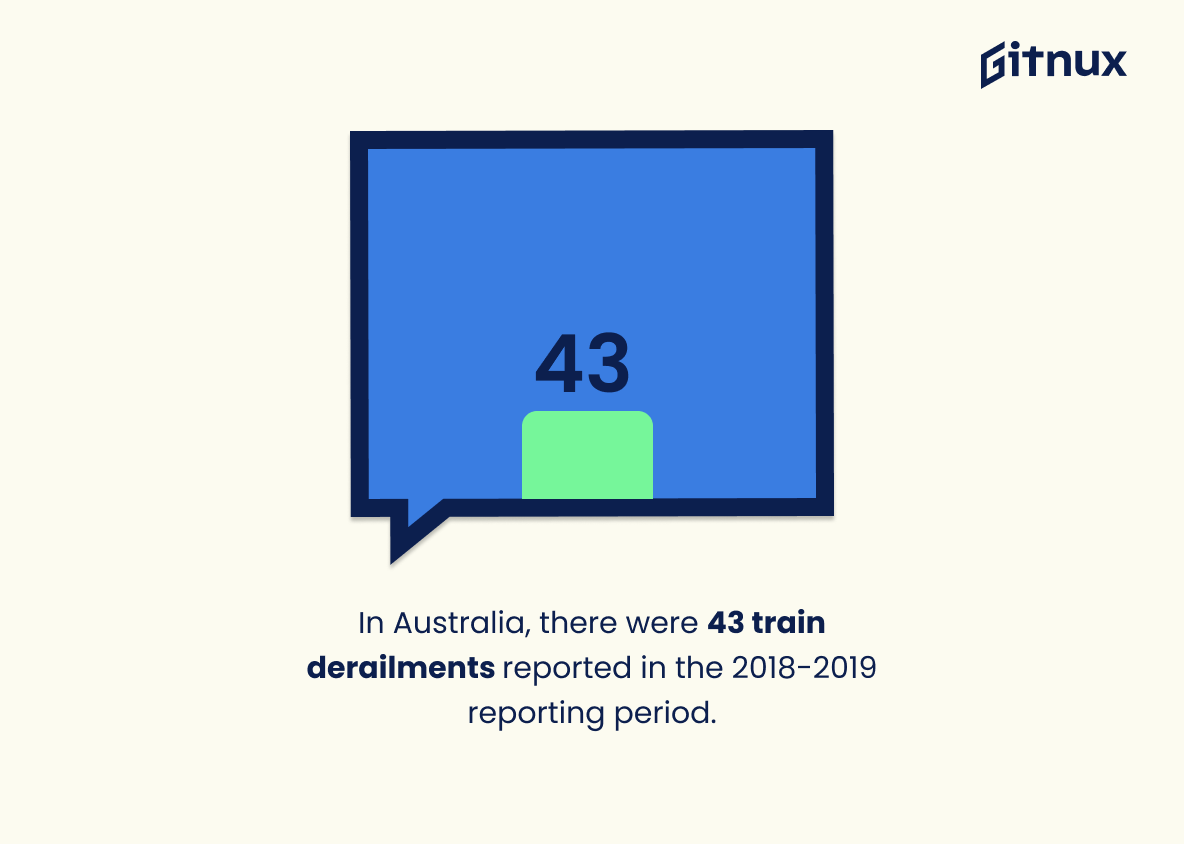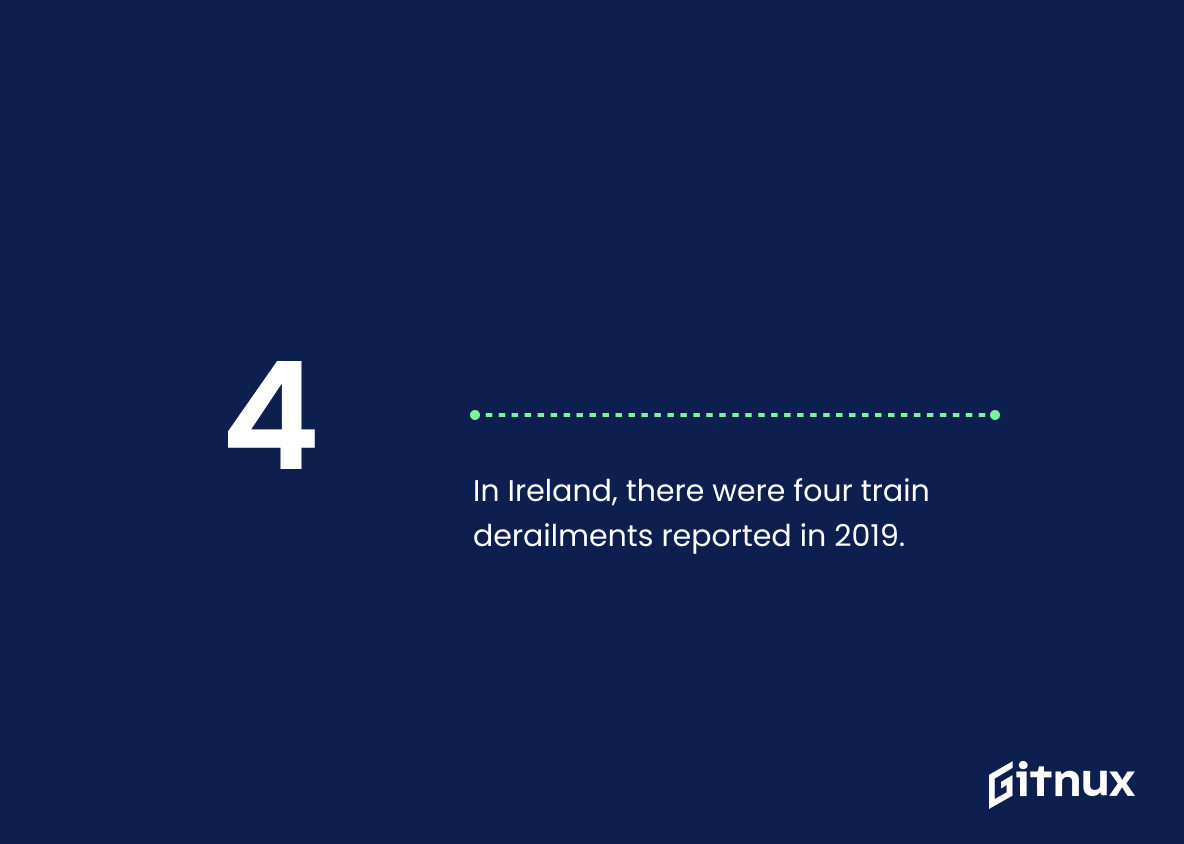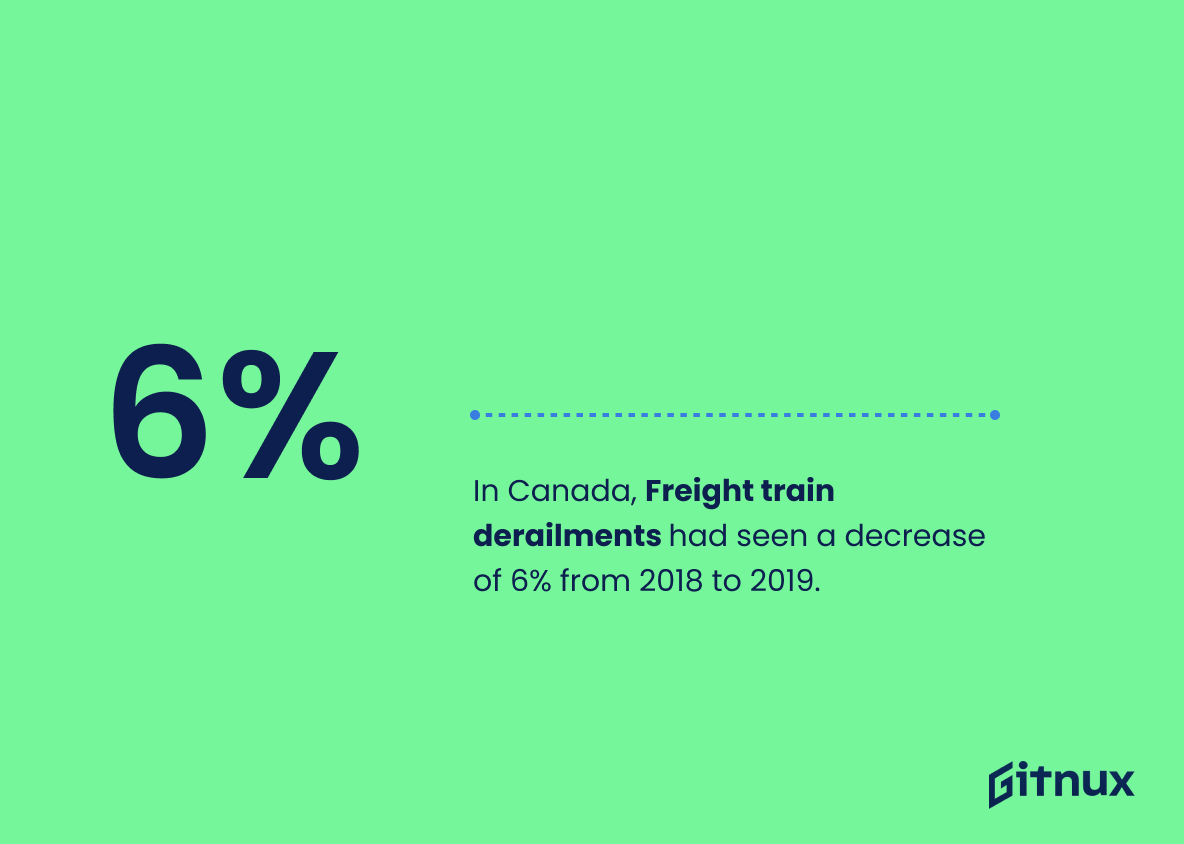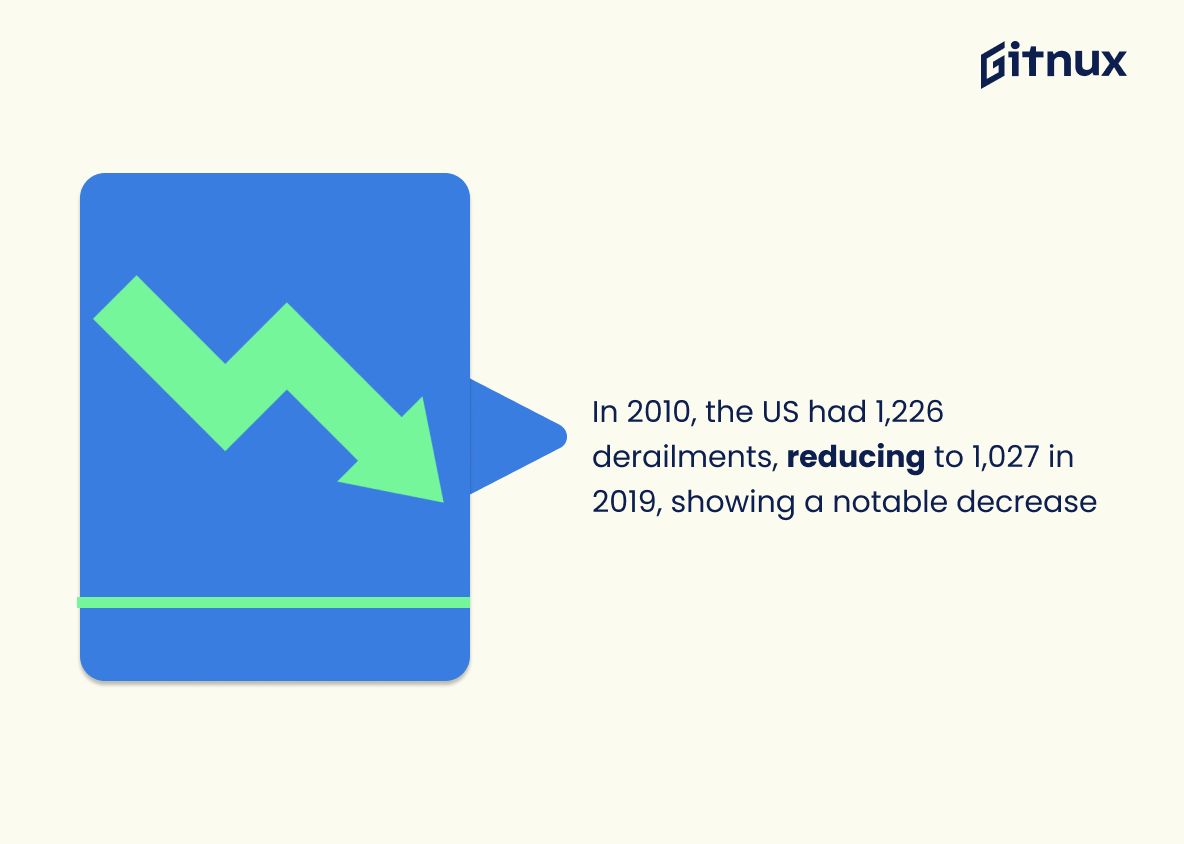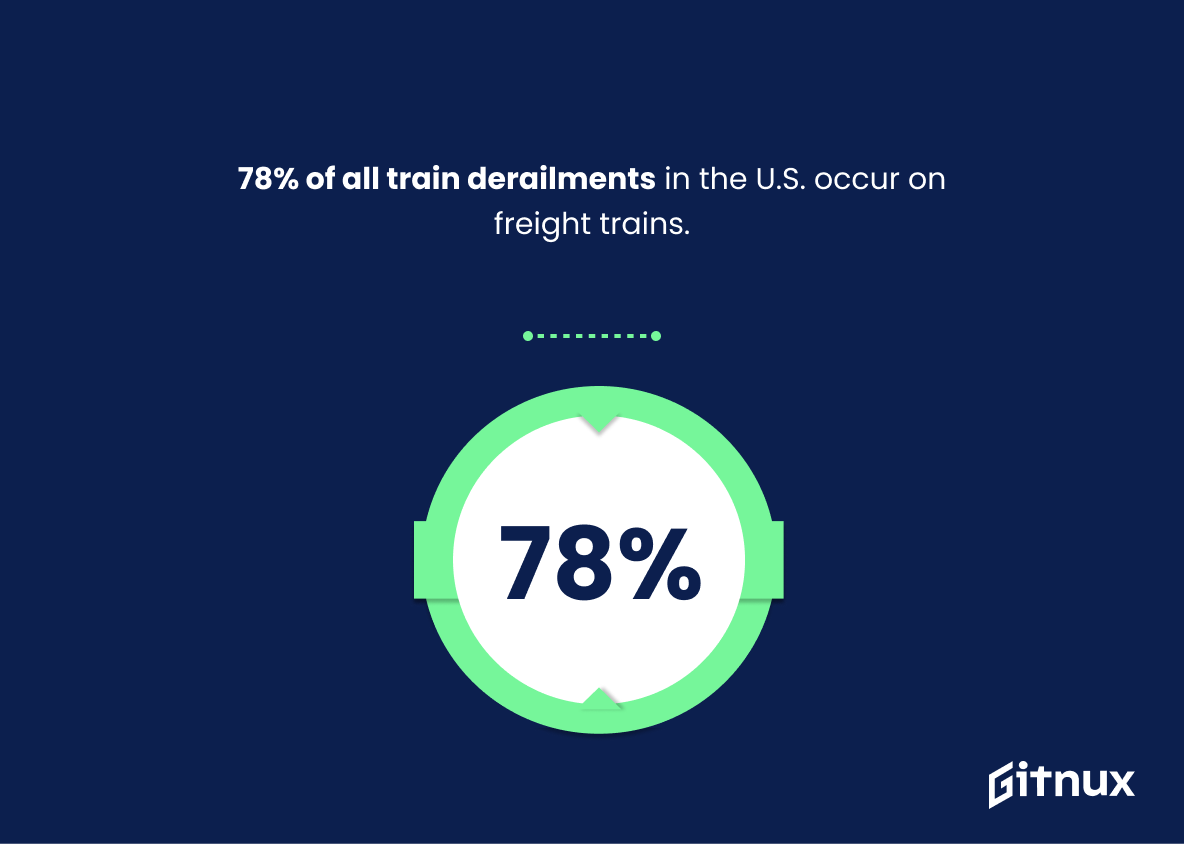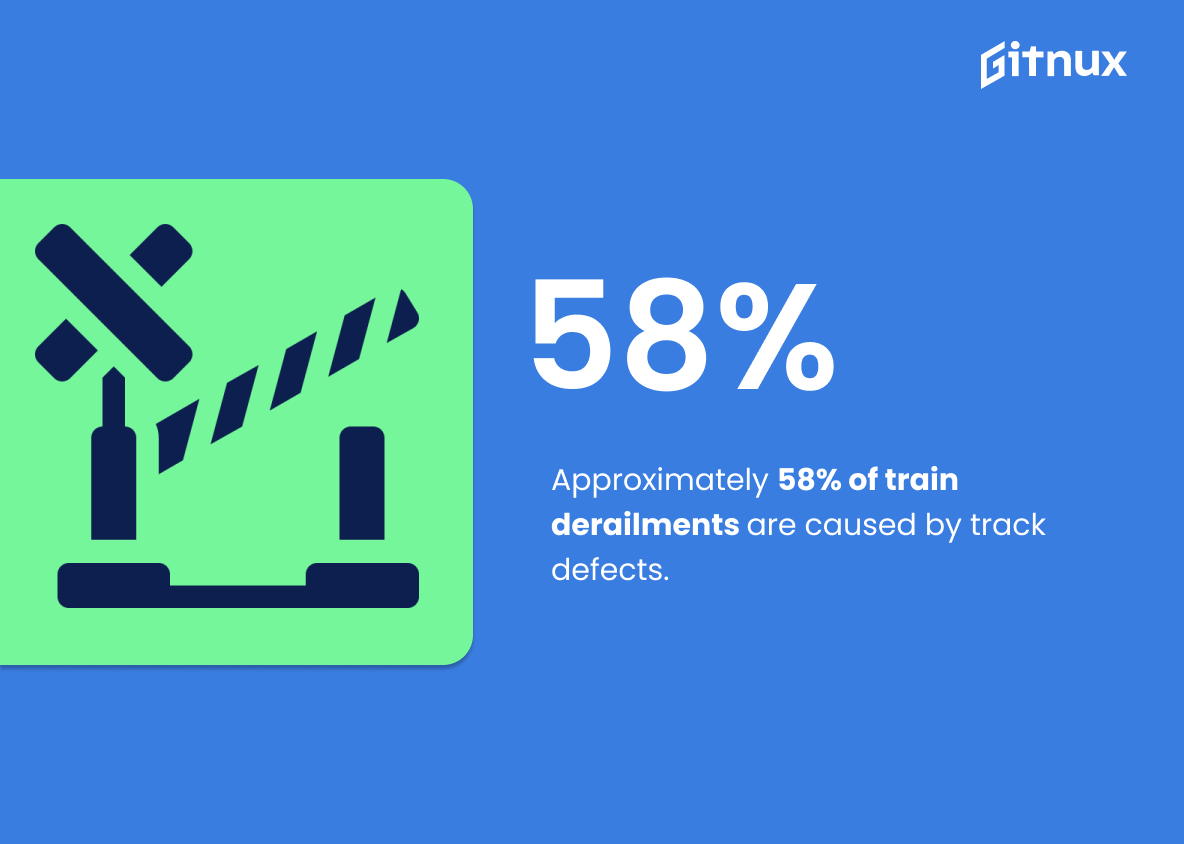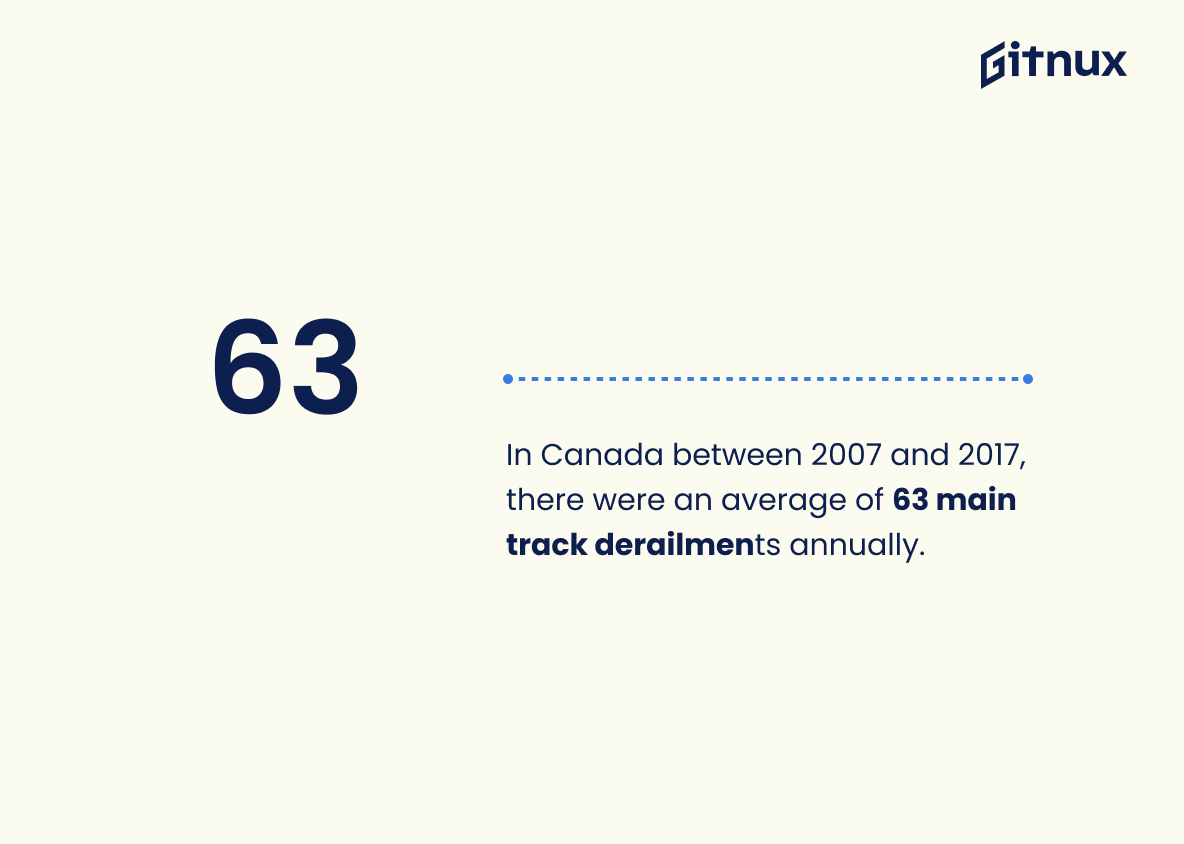Welcome to our deep-dive exploration into the world of train derailments. Chugging through the meandering tracks of data, it’s clear that train derailment statistics can be both fascinating and chilling. Understanding the reasons and patterns behind these incidents can help us comprehend the complexities of rail safety systems, operating protocols, and technological advancements. We’ll be covering an extensive array of numbers, facts, and figures that intricately weave the larger picture of global rail safety. Your journey through this labyrinth might be puzzling or even daunting, but we promise you one thing – it will never derail. So, fasten your seatbelts as we set off on this riveting ride into the realm of train derailment statistics.
The Latest Train Derailment Statistics Unveiled
In the United States, there were 1,241 train derailments in 2019.
A train enthusiast, transportation planner or even a safety regulator could find his curiosity piqued by the unveiling of the statistic: the United States witnessed 1,241 train derailments in 2019. It serves as an alarming bell tolling in the quiet night, a call to action for those who care deeply about the safety, efficiency and longevity of our rail transport system. This figure stands as a stark reminder of the lurking risks associated with train travels and the incessant need for safety improvements. Its relevance to a blog post about Train Derailment Statistics is undeniable. It’s not just a number, it’s a potent nudge towards comprehensive discussion on causation, consequence, prevention and improvements within the realm of train operations.
In 2020, a total of 1,004 accidents involving train derailments were reported in the United States.
Drawing our focus to the colossal figure of 1,004 accidents involving train derailments in the United States in 2020, we punctuate our examination of this perplexing issue. This number, while staggering, speaks volumes by itself, beckoning us to scrutinize the matter closer. Unraveling this digit, we unearth a sobering image of train safety in the U.S., an essential ingredient in the molten pot of the country’s transcontinental movement and transportation dynamics. Embedding this fact into the core discussion of our blog post invokes a healthy sense of concern and stimulates conversation around the trajectory, pace, and effectiveness of measures to counter train derailments. Therefore, this point of data is not merely a statistic; it is the fulcrum around which the discourse of Train Derailment statistics revolves, expanding and lending gravity to the narrative.
In Canada, Freight train derailments had seen a decrease of 6% from 2018 to 2019.
Delving into the world of train derailment statistics, this specific piece of data represents a beacon of positivity. The 6% decrease in freight train derailments from 2018 to 2019 in Canada isn’t just a random number. It’s a signal of successful efforts in enhancing the safety measures in the railway industry. The percentage points towards significant improvements achieved which can further stimulate the investigation and adoption of progressive practices. It offers a source of inspiration for changes that other countries could enact, shedding rays of hope in the rather grim discussion of derailments. Simultaneously, it serves as a challenge for Canada to maintain and further enhance these safety trends, turning venturesome journeys into safe and secure transportation experiences.
There were 1,226 derailments in 2010 in the United States, whereas there were 1,027 derailments in 2019, representing a significant decrease in incidents.
In the realm of train derailment statistics, mining the depths of these numbers paints a picture of our progress and commitment to safety adjustments. When your eyes meet the comparison between 1,226 derailments in 2010 and 1,027 derailments in 2019 in the United States, it’s not just numbers, but a story of effort and improvement. This decrease signifies advancements in technology, increased vigilance, improved safety measures, and stronger regulations in the railway industry over the span of nearly a decade. It’s a testament to resilience, a nod to risk management, and a beacon of hope for a future with even fewer incidents.
78% of all train derailments in the U.S. occur on freight trains.
In the constellation of crucial data points highlighted in our blog post on ‘Train Derailment Statistics’, one particular star shines with unique significance. We direct your attention towards the perturbing fact that ‘78% of all train derailments in the U.S. occur on freight trains.’ This is not just a number – it’s a call for attention. For those of us associated with the railroad industry, and in particular, the freight train sector, this statistic pitches an important question: what factors are making our freight trains more prone to derailments? Scanning this figure nudges us to dig deeper into the root causes. Are current safety measures inadequate? Is there a need for more vigorous staff training programs or upgraded equipment? This is merely the launching pad for a deep-dive into the derailment narratives spread across America.
Approximately 58% of train derailments are caused by track defects.
Delving into the realm of train derailments, one central statistic emerges as a paramount force, casting an illuminating spotlight over this niche field of study: approximately 58% of train derailments arise due to track defects. This figure injects a profound sense of urgency into conversations about the safety of railway transport and acts as a catalyst for in-depth research into effective prevention strategies. It provides us a compelling nudge to question the quality of track maintenance and inseparably intertwines with the broader narrative of train derailment statistics. With over half of all derailments attributed to track faults, it’s akin to a clarion call for railway industry stakeholders to invest more resources in preemptive track inspection, repairs, and overall infrastructural improvements.
From 2013 to 2017, 8141 train derailments occurred in the United States.
Highlighting the sheer number of 8141 train derailments in the US from 2013 to 2017 serves as an attention-grabber in this blog post about Train Derailment Statistics. It not only points to a significant railway safety issue, but also paves the way for further discussion on potential causes, possible preventative measures, and the need for effective policy changes. Such a statistic might be a wakeup call for readers who are not aware of the magnitude of the problem, and underline the relevance and importance of the topics to be tackled in the post.
In Canada between 2007 and 2017, there were an average of 63 main track derailments annually.
Diving into the heart of train derailment statistics, one cannot overlook the astounding figure surrounding Canada’s main track derailments. From 2007 to 2017, the annual derailment average sits at an unexpected 63. The gravity of this number paints a vivid picture for readers, transcending the text to visualize the reality of safety concerns and operational challenges within the railway industry. It draws attention not only to the frequency of these incidents but also to the implications for transportation infrastructure, safety mechanisms, and policy-making in a nation heavily reliant on rail transport. Furthermore, it sets a benchmark for comparative analysis with other countries, forming a cornerstone of your understanding of the global context of train derailment.
In 2018, the European Union reported 216 significant accidents caused by train derailment.
Highlighting the figure of 216 significant train derailment accidents reported by the European Union in 2018 empowers the blog post to create a lucid narrative about the prevalence of this issue in Europe. This statistic, not just a cold, hard number, transforms into a soul-stirring call to address safety measures in rail transportation. It offers the readers a tangible way to grasp the scope of the problem, serving as the pivot upon which deeper discussions on potential causes, preventive measures, and subsequent impacts can turn. Moreover, it posits a point of comparison for changes over time or differences between regions, fostering a more enriched understanding of train derailment incidents globally.
As of 2015, the United States ranks first globally in the number of annual reported train derailments, with over 1000 incidents per year.
In painting the full picture of train derailment statistics, it’s striking to see the United States topping the charts with a staggering number of over 1000 reported train derailments annually as of 2015. This compelling figure not only spotlights the country’s unique challenges in maintaining railway safety, but also serves as a launching pad for in-depth discussions about the efficiency of current train safety protocols. It invites us to explore alarming questions: What factors contribute to this high rate? How does it compare to the derailment rates in other countries? What can we learn from the nations with lower derailment cases? This significant statistic undoubtedly sets the stage for a captivating narrative in the blog post on train derailment statistics, underlining the urgency for improvements and better safety measures in the U.S.’s railway transportation.
Between 2001 and 2010, the Rail Accident Investigation Branch (UK) recorded a total of 2,755 derailments.
In threading the narrative of Train Derailment Statistics, the aggregated 2,755 derailments reported by the Rail Accident Investigation Branch (UK) between 2001 and 2010 emerges as a significant heading. It underscores not only the stark reality of the frequency of such incidents, but it also thrusts into focus the urgent necessity for consistent investment in infrastructure, safety protocols, and innovative technology. This number is not merely a statistic, it serves as a silent hymn to the urgency of rail safety, a melody of numbers that reminds us of the human cost tangled up in those mechanical misadventures. It is a numeric milestone that calls to the reader, encouraging them to consider the wider contexts – looking beyond the figures to the lives impacted, changes made, and progress yet to be achieved.
In Australia, there were 43 train derailments reported in the 2018-2019 reporting period.
Interpreting this noteworthy data, it’s evident that during the 2018-2019 report period in Australia, train derailments were far from a rare occurrence. The mention of 43 reported incidents underlines the magnitude of the challenge. When chewed over in the broader context of a blog post dedicated to Train Derailment Statistics, it imparts considerable insight into the frequency and potential risks associated with rail transportation in this specific geographical locale.
Highlighting this fact not only unveils the reality of the situation but also draws attention to the persistent need for more robust track maintenance, improved safety protocols, and advanced technology in the rail industry. In essence, this piece of statistic is like a puzzle piece, essential in completing the broader picture of global train derailment trends, contributing significantly to the blog’s overall narrative. Whether the number forms a rising trend, a decrease or maintains a steady constant in derailments over years, it sets the foundation for stimulating an informed discussion on the subject.
In Ireland, there were four train derailments reported in 2019.
Highlighting the quantifiable data of four documented train derailments in Ireland during the span of 2019, we portray a vivid image of the frequency of these unfortunate incidents. This numeric revelation serves as a plumb line to gauge the severity of the situation. It forms a significant bench mark for the Irish rail safety standards and pinpoints the need, if any, for enhancements in safety protocols. Moreover, this precise figure helps in enhancing readers’ comprehension of the global perspective regarding train derailments incorporated in the blog post, placing them in the shoes of decision makers and critical thinkers.
Conclusion
Understanding the complexities of train derailment statistics isn’t just for those within the railway industry; it’s also useful for passengers, residents living near train tracks, and policy makers. They provide insights into factors contributing to derailments, potential areas for improvement to ensure safety, and the consequences of negligence. Despite the decrease in derailment incidents due to progress in technology and safety protocols, we must remain committed to safeguarding our rail systems. After all, even a single incident could lead to devastating consequences. Thus, the goal should always be a clean record – a world where train derailments are unheard of. For that, constant vigilance, regular maintenance, competent personnel, and adherence to safety procedures are paramount.
References
0. – https://www.www.onrsr.com.au
1. – https://www.railtec.illinois.edu
2. – https://www.www.gov.uk
3. – https://www.safetydata.fra.dot.gov
4. – https://www.trid.trb.org
5. – https://www.www.rsa.ie
6. – https://www.www.era.europa.eu
7. – https://www.www.globalrailwayreview.com
8. – https://www.www150.statcan.gc.ca
9. – https://www.www.tc.gc.ca
10. – https://www.www.ntsb.gov

